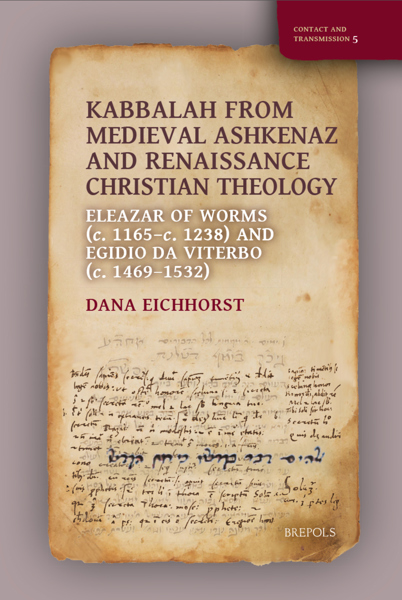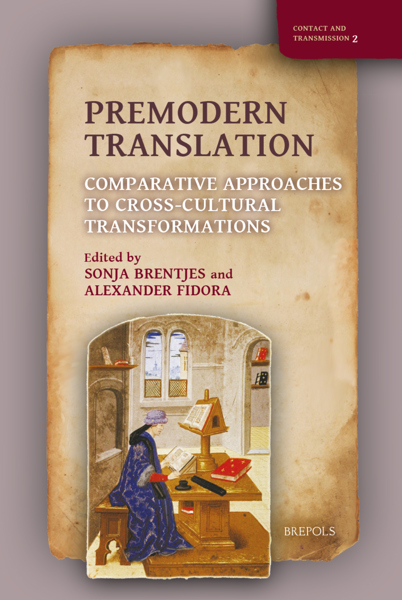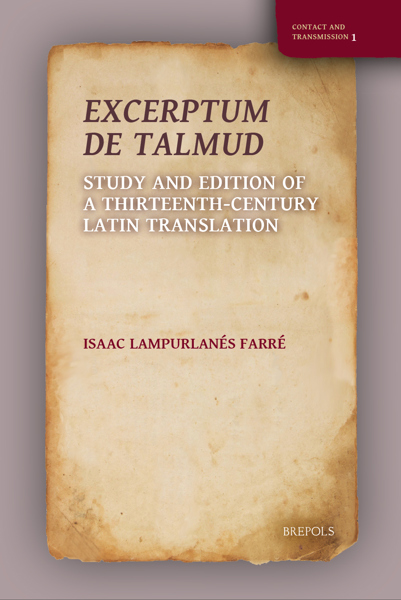
Kabbalah from Medieval Ashkenaz and Renaissance Christian Theology
Eleazar of Worms (c. 1165–c. 1238) and Egidio da Viterbo (c. 1469–1532)
Dana Eichhorst
- Pages: 223 p.
- Size:156 x 234 mm
- Language(s):English
- Publication Year:2025
- € 85,00 EXCL. VAT RETAIL PRICE
- ISBN: 978-2-503-61844-9
- Hardback
- Available
- € 85,00 EXCL. VAT RETAIL PRICE
- ISBN: 978-2-503-61845-6
- E-book
- Available
Demonstrates how Christian Kabbalah enables a new perspective on Ashkenazi sources and medieval Jewish mysticism, and equally how Ashkenazi sources help to illuminate Renaissance Christian theology.
Dana Eichhorst (Institute for Jewish Studies, Freie Universität Berlin) is a historian of medieval Jewish history, who focuses on kabbalistic and speculative thought of Ashkenazi origin and its transmission and reception during the Middle Ages and Renaissance
The preoccupation of Christian theologians and scholars with the Hebrew language and sources at the dawn of the sixteenth century resulted in the transfer of a vast corpus of medieval Hebrew texts into Christian intellectual discourse and networks. These Hebrew sources were meticulously collected, copied, translated, and subjected to rigorous study. These collections include texts that originate from medieval Ashkenaz, the majority of which can be attributed to Eleazar ben Yehuda of Worms (c. 1165–c. 1238). Rabbi Eleazar was a prominent Jewish scholar of his time and a member of one of the most prestigious families in Jewish communities of the German Rhineland and Palatinate.
However, the history of medieval Ashkenazic writings has been neglected in scholarship, which has favoured other Jewish (primarily Sephardic) sources in tracing the influence of medieval Jewish mysticism on Christian theology and Kabbalah. This book takes the hitherto disregarded Ashkenazi Hebrew sources as its point of departure. It focuses on the work of Eleazar as a main representative of the Ḥaside Ashkenaz, and on his magnum opus Sode Razayya, which discusses all matter of the divine and the mundane sphere. The book explores how Eleazar’s work was a potentially interesting source for a Renaissance Christian Kabbalist like Egidio (Giles) da Viterbo. Kabbalah from Ashkenaz is distinguished by its emphasis on the Hebrew letters and language, along with the divine word and divine speech (dibur). This central motif of the Ashkenazi sources found resonance with certain Christian theologians and Kabbalists in the context of Christian logos theology, which is similarly anchored in the divine word (verbum).
This book thus challenges scholarly traditions about ‘Jewish mysticism’ and the sources of humanist Hebraism. It demonstrates how Christian Kabbalah enables a new perspective on Ashkenazi sources, and equally how Ashkenazi sources help to illuminate Renaissance Christian theology.
Introduction
The Sources
Perspectives on Kabbalah
Kabbalah from Ashkenaz and Early Christian Kabbalah
The Complexities of a Para-Disciplinary Approach
Chapter 1. The Medieval Ḥasidic Masters: Construction of a Myth
Historical Background: Jewish Communities in Medieval Germany
The Ḥaside Ashkenaz
Sefer Ḥasidim – The Book of the Pious
Ḥaside Ashkenaz and the Secrets of Wisdom
The Foundation Legend – Construction of Ancestry
The History of the Kalonymides Between Narrativity and Historicity
King Charles in Lucca and Narbonne
Abu Ahron’s Secrets – from Babylonia to Ashkenaz
Summary
Chapter 2. Kabbalah from Ashkenaz
Eleazar of Worms and the Secrets of the Secrets
Content of Sode Razayya
The Transmission of Divine Knowledge
Unlocking the Divine Secrets
Compendium to Sode Razayya
Summary
Chapter 3. Challenging Definitions of Kabbalah
The Beginnings of Modern Kabbalah Research
Reflections on Esoteric Thought and Practice
Western Esotericism, Magic, and Kabbalah
Outlines of Christian Kabbalah
Construction of a Myth of Perennial Wisdom
No Origins but Beginnings of Kabbalah
Summary
Chapter 4. Magical Twists of the Creational Myth
Logos, Sophia, and Creation
The Language of Paradise: Lingua Adamica
Lingua Adamica and the Jewish Golem Tradition
Summary
Chapter 5. Early Christian Kabbalah, Hebraism, and Egidio da Viterbo
Christian Hebraism
Intellectual Exchange between Christian Hebraists and Kabbalists
Egidio da Viterbo (1469–1532): Biography and Hebraic Studies
Egidio’s Literary Work
Access to Jewish Sources
Christian Perspectives on Kabbalah
Egidio’s Approach to Kabbalah
Summary
Chapter 6. On the Meaning of the Word: Egidio da Viterbo and Eleazar of Worms
Kabbalah and Pious Philosophy
Verbum and Dibur
Egidio’s Curriculum of Jewish Sources
The Raziel Complex
Sefer ha-Temunah and its Connection to Sefer Raziel
Sode Razayya and the Raziel-Tradition
Salvation through Scientia Semot
Conclusion
Bibliography
Index of Names




